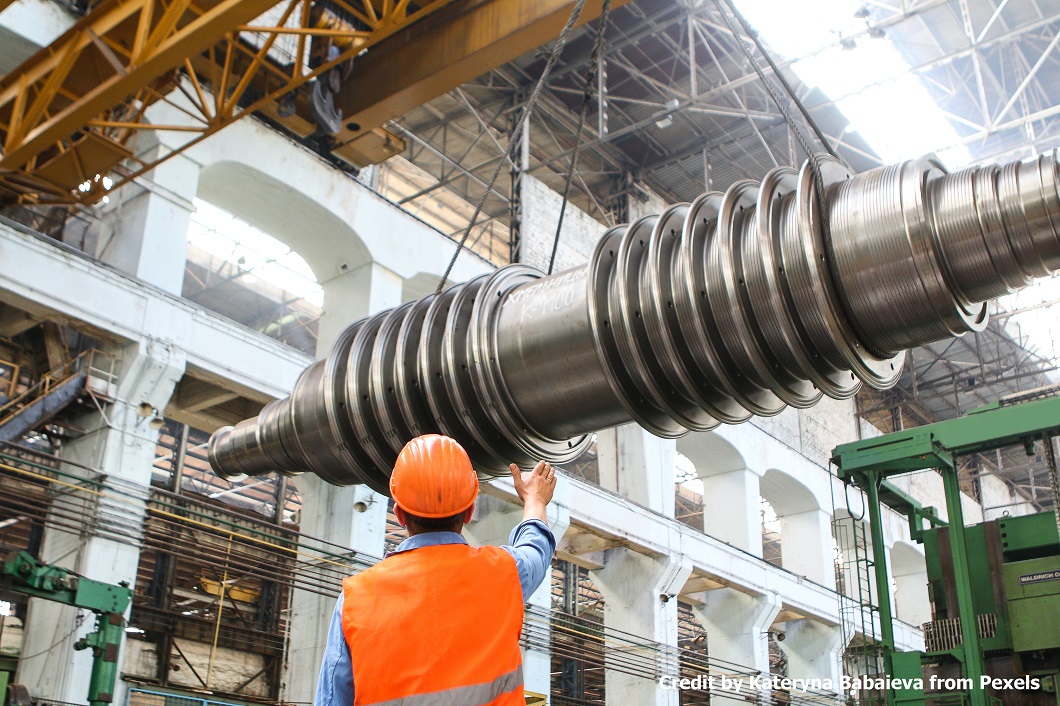By Fabio Tiviti, Senior Vice President & General Manager, ASEAN-India, Infor
For many industrial manufacturers, the road to post-pandemic recovery may seem distant and blurry. Global volatility, lingering gaps in the supply chain, and prolonged disruption of normal buying channels continue to create a chaotic picture, especially for those with dwindling cash reserves. The longer the disruption continues, the more pressing the need to kick-start positive cash flow becomes. Fortunately, technology can help industrial machinery and equipment (IM&E) manufacturers take advantage of pent-up demand and motivate customers to reignite paused projects.
The state of the opportunity
Those who make industrial machinery and equipment have some distinct advantages over other vertical industries and may be strategically well suited to nudge stalled projects from their holding position. Some infrastructure and facility initiatives can only be put off for so long before public or workforce safety is compromised.
While off highway and OEM equipment is expecting a downturn and supply bottlenecks are still interfering with sales, overall growth is expected. One analyst predicts that construction machinery sales will grow 9% in 2022 and another 5% in 2023, reaching pre-pandemic levels.
Public stimulus programs are offering a much-needed boost. In the U.S., a $1.2 trillion infrastructure bill was passed in November. Funds will cover investments in areas such as roads, bridges, airports, mass transit, waterways, and energy systems. It includes a plan to roll out $27.3 billion over five years to repair or replace about 15,000 bridges.
Steadily increasing grants from the EUR673 billion recovery fund in the European Union also will help. Countries in Europe face a crumbling infrastructure, as bridge collapses have made headlines in France, Germany, and Italy. Italy’s CNR civil engineering society has called for a “Marshall Plan” to repair or replace tens of thousands of bridges in Italy that have surpassed their lifespans. The French Transport Ministry had been warned that 840 bridges, about one-third of those maintained by the state, could be at risk of collapse if not reinforced. A report by Germany’s Federal Highway Research Institute found that while only 12.4 % of the country’s road bridges were in bad condition, just 12.5% were considered good.
This is a problem that has been brewing for decades, with civil engineering experts long warning that the concrete that was used in the 1960s and 1970s construction boom has a limited lifespan—as short as 30-50 years.
Roads and bridges are only the beginning of emerging opportunities. Large public and commercial facilities, parking garages, stadiums, utilities, and manufacturing plants are also needing attention—sometimes in the form of repairs and other times to support expansion or modernization.
Consumer demand for greater environmental sustainability is causing enterprises to examine their fleets, garages, material handling equipment, machinery, and equipment. Replacing energy guzzling machinery with equipment with a small carbon footprint will be a priority for many companies in the near future.
In fact, a study shows 88% of industrial businesses are now prioritizing sustainable manufacturing. “In a strategic move to increase operational efficiency while simultaneously reducing cost, many industrial business leaders have recently been prioritizing sustainability throughout their facilities,” says Thomas Index.
These changes in priority will trigger purchases of new industrial machinery and equipment, spurring growth for the IM&E industry. From wind-powered generators to electric forklifts in the warehouse and motion-controlled lighting, plants and facilities will be redesigning systems from the ground up.
Meeting the customer halfway – eight keys to customer-centric IM&E
Manufacturers can help instigate forward-movement by turning to customer-centric technology to help their customers re-engage in the buying cycle, feel comfortable with the investment, and be inspired by new product offerings and the promise of greater value. Attentive care and guidance may be just what customers need to move past nervous hesitations about the global economy and, instead, focus on growth potential.
Modern Enterprise Resource Planning (ERP) solutions, deployed in the cloud, often include tools, which will help manufacturers align with their customers, whether they are in industrial manufacturing, utilities, municipalities, or commercial construction.
Attentive care. The procurement agents for heavy machinery and equipment are not so different from packaged goods consumers. Their purchases may have 6-figure price points, but the driving considerations are similar. Buyers of forklifts, generators, cranes, and road equipment worry about safety, availability, ethical sourcing, product reliability, and if their selection will cast them in a favorable light to their peers. IM&E customers are ready to issue purchase orders, but they want reassurances, reinforcement and added value from suppliers. They expect a red-carpet buyer’s journey where all of their questions are answered quickly.
Collaboration. IM&E manufacturers can better align with customers by offering portals and tools for communicating about product details, specifications, delivery, and status of service. As many IM&E purchases are make-to-order or engineer-to-order, manufacturers need to open doors of communication, while still protecting proprietary data and system security.
Connected supply chain. Like most manufacturing verticals, the IM&E industry has experienced bottlenecks in the supply chain that have slowed the ability to fulfill orders. While the current disruption will likely find a balance in 2022, the experience has also taught manufacturers the value of full visibility in the supply chain and not being caught with a single supplier. With real-time views in the extended supply chain several layers deep, manufacturers can better make strategic plans for delivery of parts and components.
Complexity. Many unique features of industrial machinery and equipment make manufacturing operations complex. For example, the size of the equipment, high value of parts, specialty materials, high tech elements, and compliance mandates all add complexity to the shop floor processes. Steps need to be synchronized to avoid delays. Quality must be monitored to reduce waste, and shop floor teams need easy access to order information so they can be sure of the exact specifications. Glitches in the process can lead to highly expensive waste.
Configuration. Configure, Price, Quote (CPQ) solutions play a valuable role in helping customers select product details, creating a memorable customer experience—and a highly personalized product. CPQ solutions step the customer through selection options, recommending logical combinations, and make sure the selections are within compliance mandates. These solutions provide a quote, visual rendering, and generate a Bill of Materials so the order can proceed to production. The technology transforms the buying process, helping buyers get the exact combination of features they want, while preserving productivity and efficiency for the manufacturer.
Innovation. One of the most effective ways to reengage with potential customers is to demonstrate the innovative new product features developed. Product innovations tend to generate excitement and help the customer see potential return on invest and value. Using a Product Lifecycle Management (PLM) solution will help speed product launches, streamlining steps, and documenting stages, including testing and any industry compliance needed.
After-market service. Large pieces of equipment frequently need service contracts. The manufacturer/supplier will offer contracts for maintenance and repairs. Field service is an ideal way to be closely aligned with customers, building the relationship and laying the groundwork for upsell and repeat sales. But, from dispatching field technicians to inventorying replacement parts, field service requires management of many moving parts. It requires a purpose-built solution to ensure efficiency. As an added bonus, service contracts and tiered warranty agreements can generate revenue.
Servitization. The concept of servitization is not new, but it is obtaining renewed interest as a strategy to help potential customers overcome cash flow issues. Rather than buying the piece of equipment, the customer contracts with the supplier for the result. So, instead of buying paving equipment, the customer might buy x miles of paved road for $x. The customer is assured of getting the final result. The supplier uses equipment sensors and internet of things (IoT) technology to track performance of the machinery on the job site.
The data generated from the piece of equipment helps the supplier monitor work accomplished, if maintenance is needed, or if the machinery is being operated correctly—the types of things that will lead to cost efficiency, a predicable margin, and the ability to make a profit on the pay-for-what-you-use model. Servitization can be a winning model for everyone—as long as sensor data can be collected, analyzed, and consumed quickly and easily. The quality of the data—with context—is the key to achieving operational performance with room for supplier profit.
Case study example
Infor customer, Victaulic, is the world leader in pipe joining and fire protection systems. The manufacturer has more than 4,500 employees and 40 international facilities, helping customers in 120 countries succeed in the global construction industry. Victaulic had been managing operations with an Infor on-premises solution and recently upgraded to Infor’s multi-tenant cloud environment running on Amazon Web Services infrastructure.
The move to a modern, data-driven solution has helped Victaulic step up to today’s unusual challenges, including keeping facilities running and keeping products shipping on time. Joe Savage, Executive Vice President and Chief Financial Officer for Victaulic, described the decision to invest in a cloud solution in the context of a CFO’s priorities: “I saw an opportunity for us to be more aligned and have more global synthesis on how we approach and execute in our business,” he said.
Victaulic also turned to cloud technology so that it could have “the latest and greatest” functionality at all times—providing business users with the latest tools and technology, simplifying tasks, making users’ roles more efficient, and harnessing the power of data and analytics. As Victaulic sets sights on long-term growth, this agility and efficiency will be especially critical.
The move to the cloud enabled Victaulic to be better aligned with new software releases. Instead of launching new features and having to lead training region by region, Victaulic gained the ability to embrace new features all at once and on a global scale.
Finding such economies of scale and ways to deliver value to customers will undoubtedly help Victaulic remain a leader in its industry, no matter what the global economy brings next. For a closer look at Victaulic’s journey to the cloud, read this blog.
Final take-away
Challenges abound for manufacturers as post-COVID economic recovery limps along. For IM&E manufacturers, though, some opportunities on the horizon are reasons for optimism. A focus on infrastructure, sustainability, and innovation will trigger IM&E customers to rekindle stalled projects.
Armed with cloud-based modern software solutions, IM&E manufacturers can seize stirrings of opportunities and fan them into greater impact. Cloud-based ERP solutions, purpose-built for IM&E, offer important features. Advanced analytics, internet of things (IoT) capabilities, and Configure Price Quote solutions will give IM&E manufacturers the necessary tools to step up response time and confidently promise prospects they will get the job done – on time and as specified.
Source: FAQ

